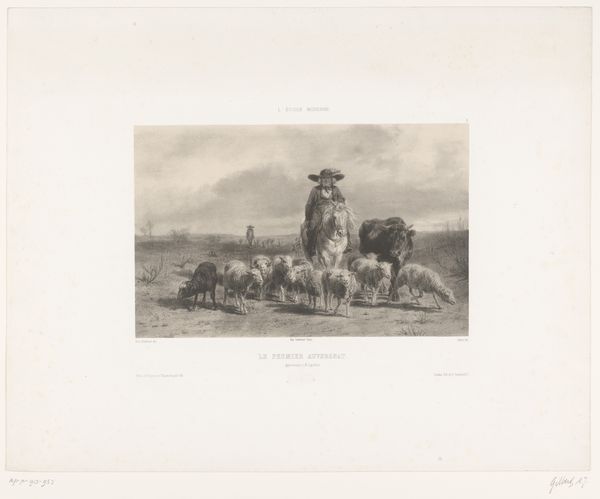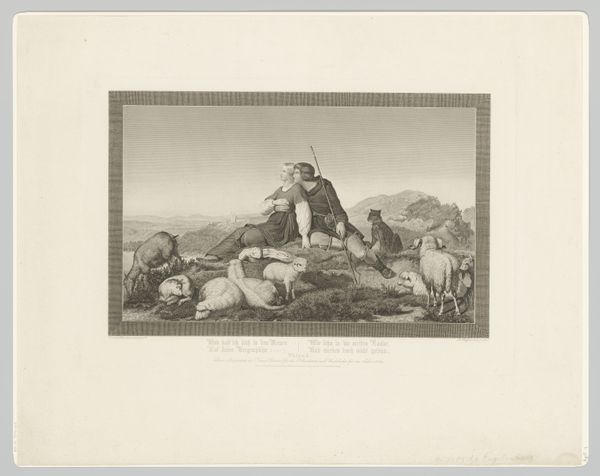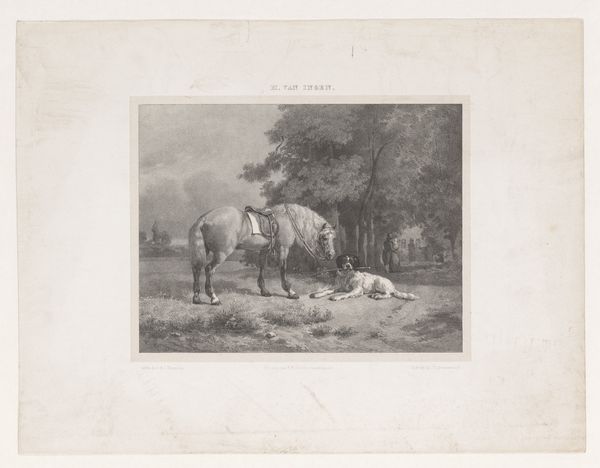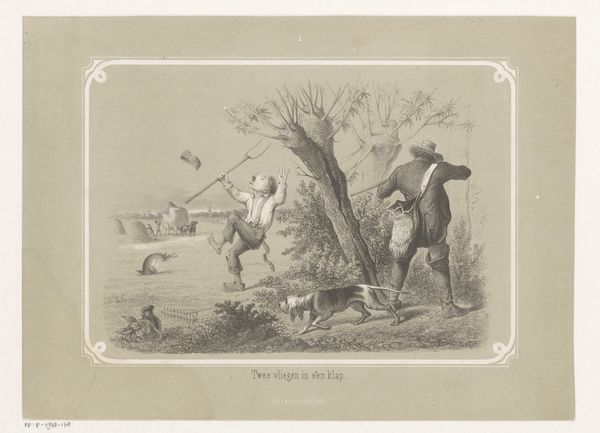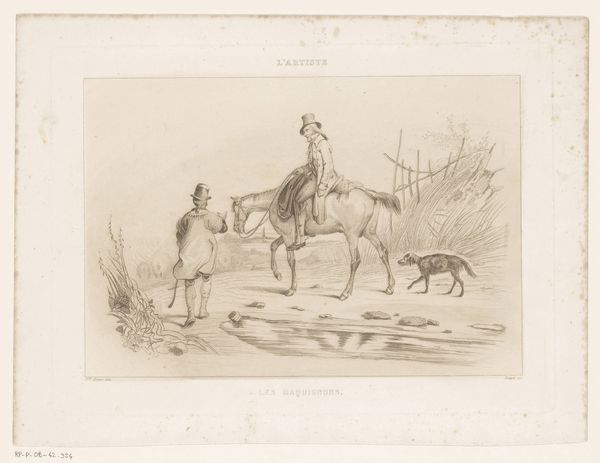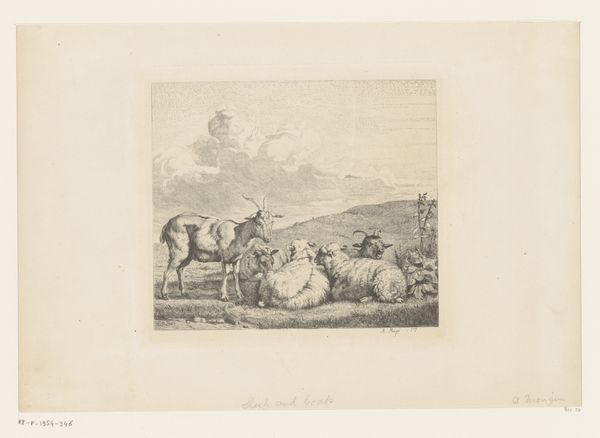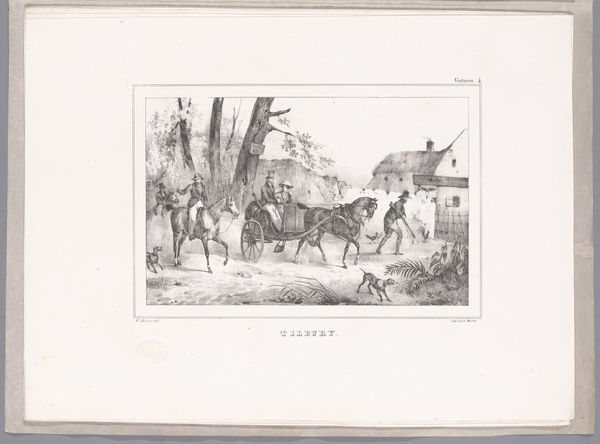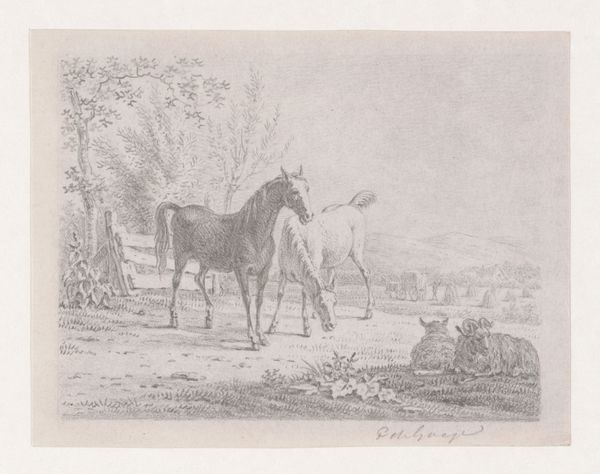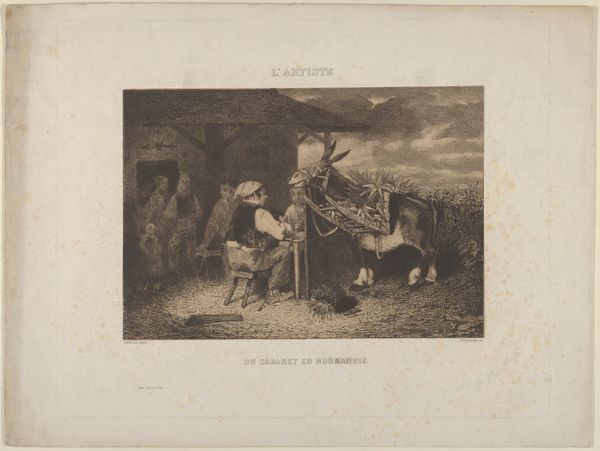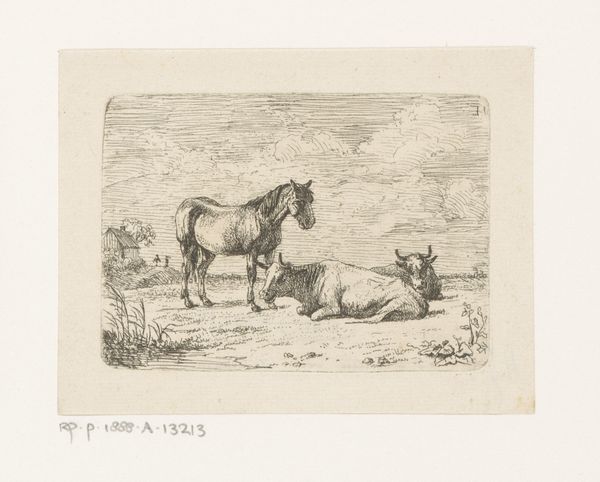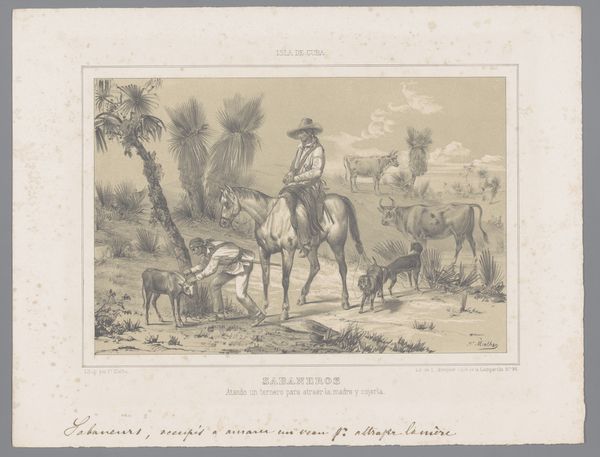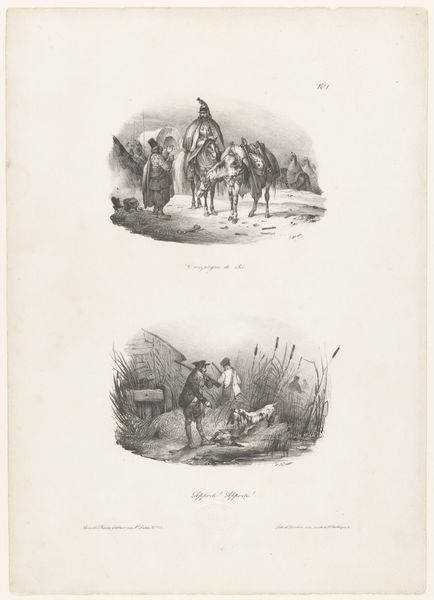
drawing, print, engraving
#
drawing
#
animal
# print
#
pencil sketch
#
light coloured
#
dog
#
landscape
#
white palette
#
personal sketchbook
#
watercolour illustration
#
genre-painting
#
engraving
#
realism
Dimensions: height 236 mm, width 300 mm
Copyright: Rijks Museum: Open Domain
Editor: Here we have Joseph Louis Leborne's "Ram, twee schapen en een herdershond," dating from 1828 to 1829. It's a print, an engraving, really. I find the stillness of the scene quite striking. The dog especially looks alert and almost regal guarding the sheep. What do you see in this piece, considering its time? Curator: Well, beyond the immediate depiction of pastoral life, I consider how this image might have functioned within the broader visual culture of 19th-century Europe. Prints like this were widely circulated. How might this imagery reflect or shape prevailing ideas about the relationship between humans, animals, and the land? Consider the burgeoning urban centers. Were such idyllic images serving a nostalgic purpose? Editor: That's a really interesting point about nostalgia. It's easy to just see farm animals, but thinking about the rise of cities, this image of rural simplicity would definitely have had a different kind of appeal, a longing, maybe even an invented tradition of an ideal past? Curator: Precisely! And who was the intended audience? Was it primarily an urban population seeking an escape, or was it aimed at reinforcing existing social hierarchies in rural communities? Furthermore, how might we analyze the visual rhetoric employed here – the postures of the animals, the composition of the landscape – in terms of power dynamics and social roles? Editor: So, not just about animals, but maybe the distribution of wealth, land use, industrialization… it really changes my whole perspective. Thanks for pointing that out! Curator: It is just a reminder that even seemingly simple genre scenes such as these can be rich sources for understanding the complex interplay of social, economic, and political forces at play in any era. It is about power!
Comments
No comments
Be the first to comment and join the conversation on the ultimate creative platform.
